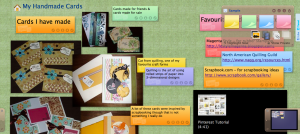The End of the Beginning
by librarianincognita ~ August 23rd, 2011I won’t lie. It is a great relief that the summer courses have ended. The compressed nature of such courses makes taking two courses less than ideal and not everyone has the luxury of taking a break or just taking one course. My leave from work ends in May next year and in order for me to finish in time, I had to take the maximum courses offered in summer. That is why I didn’t agree with the disclaimer that our instructor Dean put up in response to some of the gripes the students have about the course on two counts but firstly the disclaimer:
“This is a graduate-level course on social media. As such, it is very software-intensive and some students have found that the course content and structure (use of blogs, tweets and navigating Vista) and the sheer number of social tools that are examined during the term causes considerable information overload. If you are unfamiliar with social media or are planning to take other courses while taking LIBR559M, please speak to the instructor first to determine your suitability for the class.”
Firstly, as I have mentioned, not everyone has the luxury of taking one course.
Secondly, knowledge of social media tools is important for information professionals and therefore, I think this is an important class. However, some people may not be comfortable due to the lack of familiarity but that is precisely why they would be taking the course in the first place – to learn and discover. To have a disclaimer that discourages those who are unfamiliar with social media is not productive and undermines the learning value this course has to offer.
I am a frequent user of social media prior to this course, except Twitter, but I still found this course valuable to me. I was delighted to discover plenty of new tools that can be used. It has been a springboard for me to think about social media related plans that libraries can adopt, all in all, I would still take this class again, given a choice, if only for the tools that it had allowed me to discover.
If this class is offered again, these are the things that I imagine would make it better (but this is of course only my opinion)
1) A wiki of social media tools (not definitions) that students are expected to go out and discover and when they discover new ones, they can add to it. This also makes it clear the amount of tool exploration they are required to do and they can better plan their time.
2) Assignments shouldn’t be a treasure hunt: it should be clear to quell anxieties of missed work and again, it allows students to plan their time around the assignment due dates/ expectations more efficiently.
3) I understand that the blog and forum have their uses but it was never clear to me what topics go on the forum and what goes on the blog and given that both forum and blog postings are requirements, then there is a potential that one may become redundant. I acknowledge that the forums are better for discussions and the blog is better for open topics and reflections so maybe what can be done is to have a specific discussion question or two for the forum for students to post in related to the module topic and leave the blog for open reflections, discoveries that are not tied to the module. This will give students the flexibility to explore areas of interest even more, from marketing to tools like (in my case), digital storytelling. The fact is that there are so many social media tools available and different ones will appeal to different people, giving students the luxury to explore whatever they want and helping them to discover what they find works best for themselves at the end of the day.
To be absolutely fair, the course probably does some of this but if it did, it wasn’t clear to me. This course has a lot of value to information professionals and I would like to see it offered again to a warmer reception. It has been an interesting journey for me, sometimes frustrating, sometimes delightful but one thing for certain is that I did take away good knowledge from it.
